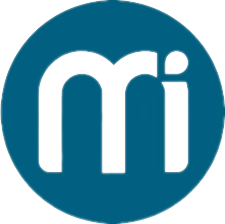How Can Installing a Dry Barrel Hydrant Save Property Damage?

Fire safety is a critical concern for both residential and commercial properties. Fires can cause extensive damage, disrupt business operations, and even endanger lives. One of the most effective tools in combating fire and mitigating its impact is the dry barrel hydrant. By understanding its design, benefits, and role in fire management, property owners can make informed decisions that significantly reduce property damage.
Understanding Dry Barrel Hydrants
A dry barrel hydrant is a type of fire hydrant designed for use in regions with freezing temperatures. Unlike wet barrel hydrants, which have water in the main body at all times, dry barrel hydrants remain empty until they are activated. This design prevents the hydrant from freezing during cold weather, ensuring reliable access to water when it is most needed.
How Dry Barrel Hydrants Work
The primary feature of a dry barrel hydrant is its internal valve system. The valve is located below the frost line, where ground temperatures remain stable. When firefighters connect hoses and open the hydrant, water flows upward from the underground pipe to the hydrant nozzle. Once closed, the valve shuts off the water supply, and the hydrant drains completely, leaving no water inside to freeze.
This mechanism provides several advantages:
- Prevents freezing and cracking in cold climates.
- Reduces maintenance costs compared to constantly pressurized hydrants.
- Ensures rapid deployment in emergencies.
NOTE:- Several residential complexes were equipped by Sensor Tech with Dry Barrel Hydrant systems last year. The hydrants functioned flawlessly during winter, avoiding costly damages. Residents appreciated the prompt service and safety improvements. Protect your property now—connect with Sensor Tech for professional Dry Barrel Hydrant services.
The Link Between Fire Hydrants and Property Protection
Property damage from fires can be devastating. In commercial properties, the loss of equipment, inventory, and operational infrastructure can result in significant financial strain. In residential areas, homes and personal belongings are at risk. Quick and effective firefighting is crucial to minimizing these losses, and dry barrel hydrants play a central role in this process.
Quick Access to Water
Time is a critical factor during a fire. Every minute a fire burns uncontrolled, property damage escalates. Dry barrel hydrants provide firefighters with immediate access to a large water supply, allowing them to control flames before they spread.
By installing dry barrel hydrants strategically across a property, property owners can:
- Reduce the time it takes for firefighters to connect hoses.
- Increase the efficiency of fire suppression efforts.
- Prevent extensive structural and content damage.
Reducing Structural Damage
Fires can compromise structural integrity, leading to partial or total collapse. Quick suppression reduces heat exposure, protecting the building’s foundation, walls, and support systems. Dry barrel hydrants ensure that water is delivered where it is needed most, mitigating risks to structural elements.
Protecting Assets and Contents
Water from hydrants is often used alongside sprinklers and other firefighting systems. When water reaches the fire quickly, valuable assets such as machinery, electronics, and personal belongings have a higher chance of survival. Dry barrel hydrants enhance the overall firefighting infrastructure, contributing to better protection of property contents.
Economic Benefits of Installing Dry Barrel Hydrants
While the primary motivation for installing a dry barrel hydrant is safety, it also makes economic sense. Property damage due to fire can lead to high repair costs, business interruptions, and increased insurance premiums.
Lower Insurance Premiums
Insurance providers often recognize properties equipped with effective fire protection systems. The presence of well-maintained dry barrel hydrants can:
- Reduce perceived risk of fire damage.
- Encourage insurers to offer lower premiums.
- Provide financial savings over time.
Reduced Firefighting Costs
By enabling faster fire control, dry barrel hydrants can reduce the scope of fire damage, limiting the resources needed for firefighting and subsequent repairs. This contributes to overall cost efficiency for property owners.
Strategic Placement and Installation
The effectiveness of a dry barrel hydrant depends on proper placement and installation. Hydrants should be accessible, visible, and connected to a reliable water source.
Factors to Consider in Placement
- Proximity to Buildings: Hydrants should be within a reasonable distance to ensure firefighters can reach all areas efficiently.
- Accessibility: They must be free from obstructions like parked vehicles, landscaping, or debris.
- Water Pressure and Supply: Adequate water pressure is essential for firefighting operations, particularly for multi-story buildings or large facilities.
Installation Best Practices
Proper installation involves coordination with local authorities and adherence to fire safety codes. Key considerations include:
- Ensuring valves are positioned below the frost line to prevent freezing.
- Using durable materials resistant to corrosion and mechanical stress.
- Conducting regular maintenance checks to ensure functionality.
Integration with Other Fire Protection Systems
Dry barrel hydrants work best when integrated with a comprehensive fire protection strategy. This includes:
- Sprinkler Systems: Provide immediate suppression within buildings, complemented by hydrants supplying water externally.
- Fire Alarms and Detection Systems: Alert occupants and firefighters early, allowing hydrants to be used quickly.
- Emergency Response Plans: Coordinate hydrant use with fire department protocols to maximize effectiveness.
By combining hydrants with other protective measures, property owners can create a multi-layered defense against fire, reducing damage and increasing safety.

Case Studies Demonstrating Effectiveness
Several real-world examples highlight the impact of dry barrel hydrants on property damage reduction:
- Commercial Warehouse Fire: A warehouse in a northern climate experienced a fire that could have destroyed critical inventory. Hydrants installed around the perimeter allowed firefighters to control the blaze quickly, saving most of the stock.
- Residential Neighborhood: In a suburban area, a house fire threatened neighboring homes. The presence of strategically placed hydrants enabled rapid suppression, preventing the fire from spreading and reducing overall property loss.
These cases demonstrate that investing in dry barrel hydrants can have tangible, measurable benefits.
Maintenance and Longevity
To maximize the protective benefits, dry barrel hydrants require regular maintenance. Even minor issues like corrosion, debris, or valve malfunctions can reduce effectiveness. Maintenance should include:
- Annual inspections by trained personnel.
- Flushing to remove sediment and prevent blockages.
- Lubrication of moving parts to ensure smooth operation.
- Prompt repairs of any leaks or damage.
Properly maintained hydrants can last decades, providing long-term protection and peace of mind for property owners.
Conclusion
Installing dry barrel hydrants is a proactive approach to safeguarding property from fire damage. These hydrants offer reliable water access in cold climates, reduce structural and content damage, and provide economic benefits through lower insurance premiums and minimized repair costs.
By strategically placing hydrants, integrating them with other fire protection systems, and maintaining them properly, property owners can significantly reduce the risk and impact of fires. Investing in a dry barrel hydrant is not just a safety measure—it is a long-term strategy to protect assets, preserve property value, and ensure the well-being of occupants.
In an era where fire risks continue to pose challenges to residential and commercial properties alike, dry barrel hydrants stand as a critical component in the defense against property destruction. Their role is clear: fast, reliable, and efficient firefighting, ultimately saving lives and safeguarding investments.
- Art
- Causes
- Crafts
- Dance
- Drinks
- Film
- Fitness
- Food
- Games
- Gardening
- Health
- Home
- Literature
- Music
- Networking
- Other
- Party
- Religion
- Shopping
- Sports
- Theater
- Wellness



